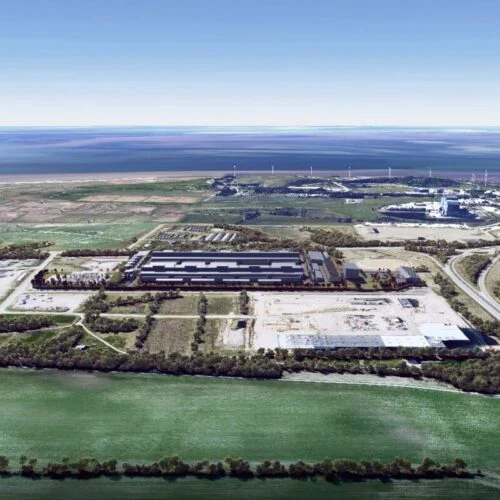With the UK government releasing its Industrial Strategy and committing to doubling investment in clean energy industries, the clean energy sector is naturally abuzz with opinions on what this will mean for the nation’s green future.
The government has stated that it plans to at least double current investment levels in key clean energy sectors, aiming to invest over £30 billion each year by 2035. Energy secretary Ed Miliband stated that the government is “doubling down on Britain’s clean power strengths as we build this new era of clean energy abundance”, adding: “The UK’s pitch is clear – build it in Britain. Power the world.”
Grid capacity concerns
Despite the positive news of higher investment in industry, a number of stakeholders have raised concerns about the ability of the UK’s power grid to cope with increased connections from new renewable energy developments and increased electrification.
Phil Thompson, CEO of Balance Power, stated that while exemptions from environmental levies “offer some immediate relief, they don’t tackle the root of the energy cost problem – continued reliance on an overworked and over-constrained grid system”. Thompson added that the government should increase support for businesses generating their own renewable energy onsite and thus bypassing the grid system, noting: “This ‘behind-the-meter’ system bypasses the need for expensive and delayed grid connections for projects and offers businesses long-term price stability and reduced exposure to market volatility”.
Director of policy and external affairs for the Energy Networks Association (ENA), Dr. Alexandra Howe, raised similar concerns, noting that while the government “has set its bold industrial strategy on the right course”, “to deliver the new infrastructure needed, upgrade existing infrastructure and maintain a resilient grid, energy networks need to continue to attract long term investment and ensure the planning process does not unnecessarily delay critical national projects”.
Tackling energy costs for industry
Rising energy costs have been an increasing concern for the UK’s heavy industrial operatiopns, with a recent report by the Energy and Climate Intelligence Unit (ECIU) noting that in the four years since the energy crisis began, British industrial producers have had to pay an additional £29 billion for its gas and electricity when compared to the four years before the pandemic.
The Industrial Strategy included the announcement of a scheme to exempt electricity-intenseive businesses in manufacturing from levies including the Renewables Obligation, Feed-in Tariffs and the Capacity Market, which could save businesses as much as £40 per MWh of energy used; the GMB Union, which represents many workers in the industrial sector, said it “particularly welcomes” action on energy costs, which it called the “number one issue facing UK manufacturers”
Laith Whitwham, senior policy advisor at the climate think tank E3G, agreed, calling this policy announcement “a landmark moment” and adding: “This strategy cuts the sky-high electricity prices driven by gas dependency and gives British industry the shot in the arm it needs to lead the charge to a clean economy.”
However, some in the industry do not feel like these policies go far enough to support British industry in coping with skyrocketing energy costs.
Caroline Bragg, CEO at the Association for Decentralised Energy, stated that while “this strategy has set out some positive steps towards cutting electricity costs”, only a small number of select businesses will qualify, “sidelining thousands of businesses who desperately need support in the face of rising energy bills – particularly those businesses outside the Government’s industrial clusters”.
Bragg added: “Ministers need to wake up, we cannot build a secure, affordable, low-carbon energy system while actively discouraging all the businesses that use it from investing in their future.”
Jobs and the green skills gap
The strategy commits an extra £1.2 billion per year for green skills development by the year 2028-2029, a move that has been broadly welcomed by the industry as it grapples with the growing green skills gap.
Aaron Merkin, CTO at Fluke Reliability, stated that the industrial strategy “makes some welcome nods toward skills reform, but it stops short of the transformational thinking we urgently need”. Merkin also notes that: “A resilient economy depends on a resilient workforce, and that workforce needs the tools, training, and support to thrive in the next era of industrial innovation.”
Jane Cooper, deputy CEO of RenewableUK, stated that with “new infrastructure comes “a golden opportunity to secure new jobs, manufacturing, innovation and exports in the growing industrial clusters across the UK”, noting that the wind sector alone employes around 55,000 people, a figure which has risen by a quarter in the last two years.
Sue Ferns, senior deputy general secretary at Prospect Union praised the strategy for recognising the importance of trade unions such as Prospect. They added: “The energy workforce is undergoing an unprecedented transition, which creates opportunities for many but also serious challenges that need to be addressed. Delivering on this strategy in a way which creates prosperity and supports jobs will require the government’s forthcoming energy workforce plan to be as ambitious as possible and fully backed by all parts of government.”
Speeding up planning
One notably policy in the Industrial Strategy includes a commitment to establish a 13-week target for decisions on planning applications called in by ministers. As reported by our sister publication Solar Power Portal, the amount of time it takes for planning applications to be decided has been continually rising for a number of years.
Solar Media Market Research analyst Josh Cornes notes that between 2010 and 2015, the average time for a project to get approval sat at around 29 weeks; in the past five years, the average wait time for approval has increased to 45 weeks, with the current longest time for a project to go through the Local Planning Authority approval process standing at 177 weeks.
As such, the leading trade group for the solar power industry, Solar Energy UK, has welcomed measures to increase resources for planning departments and set time targets for the approval of applications. “Planning departments have been chronically under-resourced, which has led to both delays and inconsistent decision-making, contributing to legal challenges. So bolstering the number of officers, as promised when the National Planning Policy Framework was launched late last year, is most welcome,” said Gemma Grimes, Solar Energy UK’s director of policy and delivery.






